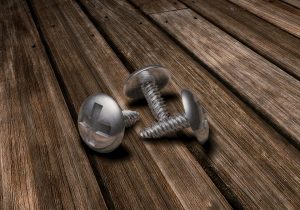 If you’ve done any shopping for screws, you’ve probably noticed that some of them are made of 100% stainless steel, whereas others are made of galvanized steel. Based on this alone, it’s difficult to identify the differences between them. After all, they both look and function pretty much the same. So, what’s the difference between stainless steel and galvanized steel?
If you’ve done any shopping for screws, you’ve probably noticed that some of them are made of 100% stainless steel, whereas others are made of galvanized steel. Based on this alone, it’s difficult to identify the differences between them. After all, they both look and function pretty much the same. So, what’s the difference between stainless steel and galvanized steel?
The term stainless steel is used to describe steel that has been mixed with a minimum of 10% chromium. The addition of chromium as an alloy helps to protect against rust and corrosion. While stainless steel isn’t technically immune to rust, it certainly has a higher level of resistance than 100% steel. This is why stainless steel is often used in outdoor environments where there’s a great deal of moisture. The chromium works to protect the metal against rust and corrosion.
Galvanized steel, on the other hand, is a type of steel that has been coated in a layer of zinc. Much like its counterpart, galvanized steel is also created with the purpose of protecting against rust and corrosion. The zinc acts as a barrier of protection between airborne moisture and the steel, protecting it from rust.
You might be wondering which type of steel is the best. Stainless steel or galvanized steel? There are both pros and cons associated with each. In terms of price, you’ll typically find galvanized steel is cheaper and more readily available. Whether you’re searching for screws, hinges, gaskets, fasteners, etc., galvanized steel usually costs less than stainless steel. This makes it an attractive choice for budget-conscious consumers and companies alike.
While galvanized steel is cheaper, stainless steel is stronger. Again, this is due to the fact that it contains chromium, which is stronger and more durable than zinc-covered steel.
So, should you choose stainless steel or galvanized steel? There’s really no easy answer to this question since both types of steel have their own pros and cons. With that said, stainless steel and galvanized steel have the same shared goal of protecting against rust and corrosion — and they achieve this goal remarkably well. Granted, there’s always the risk of rust when metal is exposed to moisture, but choosing either of these metals will greatly reduce the risk of corrosion occurring.
